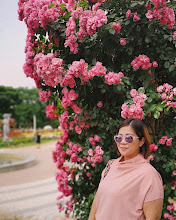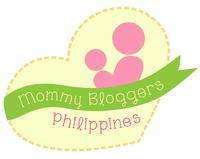Annyeonghaseyo!
Yes, my dear friends and readers, we're back in Seoul where the little man and I will be spending the holidays. We landed a few days ago, actually, and we were quite lucky to have chanced upon some very, very light snowfall the day after we arrived.
(Praying for a White Christmas this year!)
My hands have been quite full the past few days - unpacking, meeting friends, grocery shopping, doing housework, and the biggest chore of all - adjusting to the freezing weather, haha! I'm going to try my very best to get some blogwork done
(and reduce this mammoth backlog) in between the shopping, eating, and visiting tourist destinations. And with that, let's do some Seoul Searching all over again with a trip to
Nandaemun Market.
 |
| Welcome to Nandaemun Market! |
The largest and oldest traditional market in South Korea,
Namdaemun Market is located right beside the
Great South Gate,
Namdaemun, from which its name was derived. Established in 1414 during the reign of King Taejong, Namdaemun Market began as a government-regulated marketplace with grains, fish, and fruits as the most popular trading commodities.
 |
| And we're ready to explore! |
In 1945, after liberation from the Japanese, the merchants earned full operational rights of the market through the establishment of the
Namdaemun Merchant Organization. However, tragedy struck the then-developing marketplace, as it turned to ruins during the Korean War and then ravaged by fire shortly after being rebuilt.
 |
| One eager beaver. |
After a series of huge renovations, Namdaemun Market re-opened its doors in 1964. At present, the market is filled with over 1000 shops covering a span of more than 10 acres.
 |
| It's like Divisoria, but cleaner and safer! |
With its labyrinth of shops, stalls, and street vendors, you can practically buy anything and everything at Namdaemun. From cellphone accessories to luggage tags, kitchen utensils to bath items, even
cross stitch patterns, they have it all at Namdaemun Market! It's like
Divisoria in the Philippines - but
cleaner and
safer!
 |
| Rummaging through the plushies and other cute items. |
We have been warned that the place can get seriously crowded during Fridays and Saturdays, so I chose to visit on a Wednesday. Luckily, the place was not as jampacked as I thought it would be, making it a pleasant and comfortable shopping experience for both Yue and I.
 |
| See? He's all smiles! |
Clothes, bags, shoes, toys, and souvenir items are a common sight in Namdaemun Market. Most of them are relatively inexpensive, and can be purchased at wholesale prices if you're buying in bulk.
 |
| Hanboks! |
 |
| Chopsticks, coin purses, kitchen utensils... |
 |
| Classic souvenir item - fridge magnets! |
Namdaemun also has an area known as the
'Ginseng Market', which is found along the market's central path. The shops in this area sell quality ginseng at discounted prices. Both fresh and processed ginseng
(tea and powder) can be bought in this area, along with a variety of oriental health food such as honey, yeongji mushroom, brown rice, and adlay.
 |
| Ginseng. |
 |
| Mushrooms. |
 |
| In front of an Oriental Medicine store. |
Speaking of food, Namdaemun also has a wet market where you can buy fresh produce, dried fish, and other food products. This area is also lined with '
sikdang', or hole in the wall diners.
(In the Philippines, these are called 'turo turo'.)
 |
| A bounty of fresh vegetables. |
 |
| Nuts and grains. |
Or you can ride the following buses
Blue Bus # 103, 104, 105, 108, 51, 152, 163, 261, 262, 263, 300, 371, 401,
402, 406, 500, 501, 503, 504, 505, 604, 700, 701, 704
Green Bus # 0013, 0014, 0015 (to Yongsan), 0211, 7015, 7021, 7022, 7023
Yellow Bus # 01, 02.

















































































.jpg)




